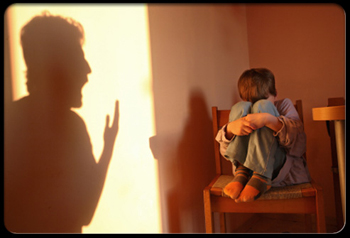Why Punishing Your Kids Can Be Dangerous

How a parent corrects a child’s behavior is always a hotly
contested topic. From punishment to timeout, to taking privileges and
things away, to using timeout as a calming place, every family does it
differently.
There is no “one way” to correct behavior. Parents
need the freedom to learn about themselves and their children through
the correction choices they make. My question to you is, do you have all
the facts? Have you considered the emotional ramifications of your
correction methods? Have you factored in how your methods may impact
your parent/child relationship, now and in the future?
When Timeouts and Punishments Backfire
I will never forget the pain on one dad’s face as he stood up during a
parenting seminar I was giving and said, “My father recently passed
away and I’m mad. Not because he passed away, I’m mad because I didn’t
get the chance to tell him how much I hated being sending me to timeout
for everything! I must have been sent to timeout fifteen times a day; it
was like being in jail! The more I was sent to timeout, the more
resolved I became not to change my behavior!”
Many parents like the idea of timeout till they use it, then they become
frustrated by the results.
They see no changes in behavior, just more battles. Circle of Moms
member Stacy R. has that dilemma. “Every time I have to put my daughter
in
timeout it’s a battle… I mean a big battle. She hits, kicks, pinches…”
There
is a reason why children react the way they do when being punished or
sent to timeout to correct their behavior. Psychotherapist Lisa M. of
Gems of Delight
says it perfectly: “…using isolation, fear, and punishment doesn’t work
for nurturing our children to be compassionate, empathetic and
confident kiddos…”
In order for a child to learn how to change
his behavior, you, the parent, have to first take an honest look at what
you're bringing to the method you're using to correct the behavior.
- If you’re angry and yell as you send your child to timeout, he’ll react instead of listen.
- Threatening a child is useless. Because there’s no follow through, he learns to tolerate the threats and just keeps misbehaving.
- Correcting or punishing a child for crying or a tantrum doesn’t make
her feel safe or heard, so she just continues crying or tantruming.
A Better Approach
Many parents realize that what they’re doing to correct behavior
isn’t working, but keep doing it because they don’t know what else to
do.
So what else can you try? It’s been proven over and over again that
the key to helping a child learn about herself and the world around her,
is to use boundaries. Boundaries are the touchstone that helps bring a
child through an experience. Boundaries help children understand what
they are supposed to do, instead of what they’ve done. Here are two
methods that use boundaries to help kids learn better behavior.
Method #1: Making Amends
Young children learn best by seeing the correlation between a mistake
and fixing the mistake. They learn they’re responsible for their
actions and have to make amends, even when they don’t want to. (For
details, see
How to Teach Kids to Learn From Their Mistakes.)
Taking
privileges or things away usually causes a big reaction and causes a
child to promise the parent anything in order to get a game back. No
discovery, understanding or learning has really taken place. (One
exception, if taking things away is working for your child, then keep
doing that.)
Method #2: Time, NOT Timeout
Daily life can sometimes get in the way of teaching a child about
behavior. Things like being busy with another child, being too angry at
the moment, or having no idea how you want to handle things. When that
happens, let time, not timeout, work for you.
Have your child go sit in his room. Not for timeout, but so you know where he is when
you’ve calmed down and are ready to talk to him.
While
he’s in his room, have him think or write down his version of what
happened, what he should have done instead and how he plans to repair
things. When you’re ready, go in and talk. If you don’t agree with his
plan, make him aware of the impact his actions have had on others and
work together to make a new plan. There’s no need to mad or ignore him.
Stay connected; give hugs, even offer to sit beside him if he needs it.
By
Sharon Silver
Sharon Silver is the author of Stop Reacting and Start Responding and the Parenting Skills e-class. Go to proactiveparenting.net
to download two free chapters from her book and learn about the
Proactive Parenting flagship big-picture program. Find Sharon on Twitter and Facebook.






